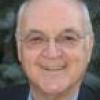This coming Sunday, September 28th, is the thirtieth anniversary of Pope John Paul I’s death. Two days later we shall be marking the sixty-fifth anniversary of Pope Pius XII’s historic encyclical on biblical studies, Divino Afflante Spiritu (“Inspired by the Divine Spirit”).
John Paul I was the first pope in the entire history of the Church to take a double name. He also left his mark in history by being the first pope in more than a thousand years to refuse to be crowned like an emperor, with the triple tiara. (What follows is drawn largely from my book, Lives of the Popes.)
Although John Paul I was only pope for thirty-three days, his was not the shortest pontificate in history. There were at least ten other popes who served for thirty-two days or less, the shortest being Urban VII, whose pontificate in 1590 lasted only twelve days.
The conclave that gathered on August 26, 1978, twenty days after the death of Paul VI, was the largest conclave in the history of the Church: 111 cardinal-electors. But it required only four ballots, all on that day, to establish a winner: Cardinal Albino Luciani, Patriarch of Venice.
In choosing a double name, the new pope did so, he said, to honor Pope John XXIII, who ordained him a bishop and who preceded him in Venice, and Pope Paul VI, who named him a cardinal.
John Paul I struck a humble note the next day just before his Sunday papal blessing: “Be sure of this,” he said to the crowd assembled below him in Saint Peter’s Square, “I do not have the wisdom of heart of Pope John. I do not have the preparation and culture of Pope Paul.”
In an address to the cardinals earlier that morning, the new pope pledged to continue the implementation of the Second Vatican Council, to revise the Code of Canon Law for the Latin and Oriental Churches (the new Codes were promulgated under John Paul II in 1983 and 1990 respectively), and to promote evangelization, ecumenism, dialogue with all people, and peace.
John Paul I never lived to carry out his agenda. Late in the evening of September 28th, the pope died of a heart attack while reading in bed. His light was still on when his body was discovered early the next morning.
The failure to conduct an autopsy, because of the recent custom (since Pius X in 1914) against embalming a deceased pope, and the inconsistent stories that were told regarding the question of who discovered the pope’s body in his bedroom, generated a few bizarre rumors.
The Vatican claimed that it was his Irish priest-secretary, John Magee, who discovered the body when, in fact, it was Sister Vincenza, his long-time housekeeper.
Others charged that the pope had been poisoned to prevent him from exposing financial irregularities in the Vatican Bank.
The most likely truth is that John Paul I died prematurely because he needed treatment for his serious health problems and did not seek or receive it. Upon death, he was just short of his sixty-sixth birthday.
The Romans had taken an immediate liking to this humble, smiling pope and reacted more emotionally to his death than they had to Paul VI’s only two months earlier.
At his funeral, the dean of the College of Cardinals, Carlo Confalonieri, said that John Paul I had “flashed like a meteor across the sky.”
He was buried in the crypt of Saint Peter’s just across the aisle from another short-reigned pope, Marcellus II, whose pontificate had lasted only twenty-one days in 1555.
When Cardinal Karol Wojtyla was elected to succeed John Paul I on October 16, 1978, he was the first Slavic pope in history and also the first non-Italian in over 450 years. He would also become the second-longest reigning pope in history (not counting St. Peter himself): twenty-six-and-a-half years.
The second important anniversary that the Catholic Church is about to observe is the publication of Pius XII’s encyclical on biblical studies, Divino Afflante Spiritu. Biblical scholars then and since have referred to the encyclical as the Magna Carta of biblical renewal.
The encyclical directed exegetes to uncover the literal meaning of Sacred Scripture, that is, “what the writer intended to express.” Biblical scholars, the pope insisted, are to use the most up-to-date scientific and historical methods to achieve this purpose. He urged scholars and preachers alike to avoid excessive use of figurative and allegorical senses of Scripture.
Despite strong opposition from some forces in the hierarchy at the time, the encyclical’s directives were incorporated by Vatican II into its Dogmatic Constitution on Divine Revelation.




